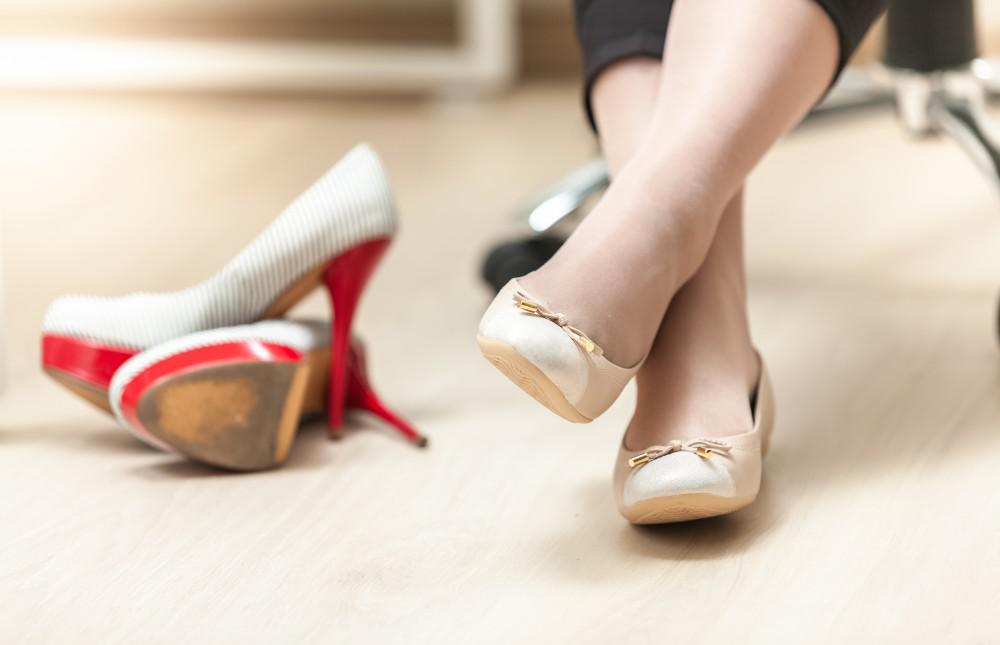These days, high heels aren’t the only stylish option when you’re choosing shoes for work or a night out. Supportive flats ― which are flats with arch support ― are becoming a popular option, because they’re more comfortable to walk in than high heels, and they’re getting more and more stylish, too.
Nearly 75% of Americans will suffer from foot problems at some point in their lives. David B. Glover, DPM, FACFAS, and our team at Mountain View Foot & Ankle Institute see what ill-fitting, uncomfortable shoes can do, from bunions and hammertoes to ingrown toenails and plantar fasciitis.
We want to let you know that you don’t have to sacrifice comfort for style. You can have both with supportive flats. Here are five benefits of wearing supportive flats.
1. Arch support
Your arches are the natural curves that run along the bottoms of your feet from your heels to your big toes. They’re important because they align your body from head to toe and distribute your body weight when you walk and stand.
High heels and flats without arch support can contribute to foot issues, such as plantar fasciitis and flat feet. Supportive flats can enhance your stability and balance, keep your feet comfortable, and reduce your risk of developing foot problems.
2. More room for your toes
High heels and other types of fashion footwear often have small, cramped toe boxes. Pointed toe shoes can cramp your toes, cause pain, and increase your risk of developing ingrown toenails, hammertoes, and other conditions.
Many styles of supportive flats have roomier toe boxes, which can give your toes the space they need to move freely as you walk. Plus, your weight is distributed evenly along your feet in flat shoes, so there isn’t extra weight on your toes and the balls of your feet.
3. No more aching feet
Most people either have low, neutral, or high arches. If you have a neutral arch, your feet may not require extra support. However, people with low or high arches can suffer fatigue when wearing shoes that aren’t supportive.
Supportive flats redistribute your body weight by providing arch support where you need it. Supportive flats can relieve aches and pains, particularly if you’re used to wearing shoes with little or no support. If you take your shoes off at the end of the day and notice aches and pains, this may be a sign that you need supportive shoes.
4. Better mobility
Since flat shoes are linked to less foot pain, it’s no surprise that another perk of supportive flats is better mobility. Instead of balancing your weight on a small high heel, it’s evenly distributed across your whole foot for increased stability and comfort.
That means it should be more comfortable to stand and walk for long periods of time in supportive flats. Choosing supportive footwear is especially important if you have diabetes, because complications related to your nervous system can increase foot pain and discomfort. With the right shoes, it can be possible to enjoy a more active lifestyle with less diabetic foot pain.
5. Style without the pain
Today’s podiatric technology means shoes don’t have to be ugly to be supportive. Gone are the days when your only choice for comfort was unsightly footwear. You can have cute shoes without sacrificing style, comfort, or safety.
Wearing high heels day in and day out can increase your risk of suffering an ankle injury, because it can be easy to take a wrong step or break the heel of your shoe. Wearing flats can help protect against common injuries, such as sprained ankles. And flats today come in an abundance of options that feature stylish silhouettes and colorways, with functional cushioning and support built in to keep feet happy.
Are you still wondering what shoes to wear? We can help. To learn more, book an appointment online or over the phone with Mountain View Foot & Ankle Institute today.

